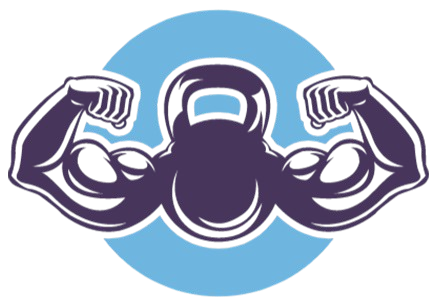Fitpro Income
How To Start A Personal Training Business With No Money
Ok, so you love exercise and want to start your own personal training business.
The problem is, you don’t have any money, so can you still start your own business without any money at all?
The good news is, that there are a ton of ways that you can get your business up and running with either free or incredibly cheap resources.
In this article, I will explain all your options and laying out how to use them in their most cost-effective way possible so you know exactly how to start a personal training business with no money.
Sound good?
Let’s go….

The first thing we need to decide on before we begin working out costs is how are you going to run your business.
You have a few options to choose from, and they are:
- Employed in a health club
- Freelance (contract trainer)
- Independent
- Online coaching
- Boot camps
We can save a little time here, as any gym that would hire you as a personal trainer or fitness instructor will not do so without you having a certified qualification.
Some of these qualifications can cost hundreds if not thousands of pounds to get to level three which is required to be allowed to become a personal trainer in most companies.
Seeing as this is the case, if we are truly looking to start a personal training business with no money, we can cross being employed by any company as a pt (for now), they just won’t accept you.
Two options left!
We now have two options left, either we go down the path of starting a training business without any qualifications, or we get a little sneaky/creative!
Path 1. Starting a personal training business with no qualification
The first thing most people will need when they start a career in fitness is to get themselves qualified.
Great news! Running a personal training or fitness instruction business without being qualified isn’t technically illegal, so there’s some good news for you.
That’s already saved us a few grand, so we are off to a great start.
Training location
Now you need to decide how you are going to train people, in their homes? In your home? in parks or in your own private gym?
I’m going to put a strike through parks and outdoor spaces straight away. These locations used to be free and a great place to train people. However, in the last few years (in the UK at least) local counsels have caught onto the fact that people were using their open spaces to profit.
They didn’t stop trainers from using parks or outdoor spaces, but they did start charging people to do so. It’s not a huge amount per month (£39 or so), but seeing as I am trying to answer this question as accurately as I can, I am going to take parks and outdoor spaces out of the equation.
Training people in their own homes is a great way of offering premium personal training services, as you will be travelling to them and training them in the comfort of their own home.
The travelling aspect is what I think takes this option away from us, as you could end up spending a decent amount of cash each month on either driving or using public transport to get to your clients.
What we are left with are the two most viable options for starting a personal training business for free.
Training people in your home or your own private gym

If you have been training yourself for years at home you may well be lucky enough to have your own gym in a shed or garage.
This is pretty much the ideal situation, as you will not have to source equipment and you will know exactly what you can facilitate in terms of training.
If this is your situation, then lucky you, and you can probably skip straight to the next section.
I was seriously lucky, as I actually did have a fully equipped gym at the end of my garden that I helped my dad build from scratch (extra bloke points earned that month).
I totally understand that hardly anyone has a fully equipped gym just sitting in their garden, so we are going to have to be a little thrifty.
Sourcing free equipment

More good news for you now.
You won’t need loads of expensive equipment to start offering personal training sessions in your home.
Here is a list of what I would consider your basic equipment:
- Kettlebells
- Stopwatch
- Exercise mat
- Tape measure
Stopwatch– Free (Just use the one you already have on your phone)
Exercise mat – Free (use a bathmat or something soft that your client can lay on)
Tape measure – Free (search for “Free tape measure”, there are tons of sites giving these things away for free for some reason. If you need to subscribe to something, just unsubscribe at your first opportunity)
Kettlebells – (Not 100% required, but you can pick these up for next to free at car boot sales or Garage sales in the US. You can also see if any gyms in your local area are replacing theirs and offer to take them off their hands).
Marketing yourself for free
Big companies spend tens of thousands and sometimes millions of pounds (dollars in the US) on their marketing campaigns to bring in customers.
We will not be doing this, we will be trying to do this completely for free by making use of what you already have available to you and by word of mouth.
Making use of Social media

There’s a fairly good chance that if you are reading this you are probably in your early 20’s or even 30’s. This means you will almost certainly have a pretty good grasp of social media and a good amount of friends on Facebook (even if you haven’t spoken to them in five years) or a good following on Instagram or Snapchat.
If not, you’re going to need to sign up for some of these free services and start building up your friend list and get yourself as many “friends” as possible.
After that, you will want to make yourself up a page on Facebook and Instagram.
There’s a whole lot of options you have here in terms of how to use social media to market your personal training services, but I want to keep this article as concise as possible, so if you’d like to learn more about that, please click the link below to get a great idea of where to start.
19 Quick Social Media Marketing Tips for Personal Trainers
Social Media for Personal Trainers (course)
Using word of mouth to market your personal training business

For any of you technophobes out there, or people that just plain hate social media, good old fashioned word of mouth is a great option for getting your fitness business known in your local area (and it costs nothing!).
Speak to your friends, family, friends of the family, friends of friends and whoever else you can get in contact with to let them know that you are starting your own training business in your home and you are taking on new clients.
You are going to want to entice them in with a few free sessions, and it may be a good idea to train five or so of your first clients for free so they can sing your praises to everyone they know once you have got them great results.
Pro tip: Give these people your best training, give them everything you can. It will suck that you aren’t getting paid, but the wonders these people will do for your local word of mouth will certainly be worth it.
Think of them as your own personal walking billboards.
Sourcing free business cards
Without a website, people won’t be able to easily find your phone number or email address to contact you to discuss training sessions. Handing out your business card with your name, address and any contact details is a very easy way for people to be able to contact you when they are good and ready.
A crazily easy and totally free (our word of the article) way to get business cards is to type into Google “free business cards”.
There are loads of sites that will give you your first 50 cards for free, but then expect you to keep coming back for more. Design your card, put your details on and get them ordered, then cancel a subscription (if you need to) asap then move on to another company offering the same thing.
Here’s one to get you started.
Creating a safe environment for your sessions

Safety is a major factor in anything related to fitness, the last thing you want is anyone getting hurt whilst you are training them. It will make you feel terrible, the injured person will obviously feel terrible and it can potentially ruin your business, so don’t skimp on making sure you have everything set up as safely as it can be.
Here are some quick factors to take into account when setting your training are up in your home, but please use some common sense and assess your home for any other potential hazards not listed.
- Make sure there is plenty of space available
- No slippery surfaces (remember, carpets can also be slippery)
- No spilled water on laminate flooring etc
- Check any equipment you have for anything that could cause injury (chunks taken out of old kettlebells etc)
- Understand your clients’ fitness level (don’t push people too hard if they are new to exercise or excessively overweight
- Stick to what you know (don’t get too elaborate in the exercises you prescribe at the start, keep things basic until you have a firm grasp of what you are doing)
Starting your sessions
After a few weeks of handing out business cards and speaking to friends and family, you should have a few people booked into sessions with you.
Start slowly, and keep things very basic for your first few sessions with them, your aim is not to try to destroy your clients, but to educate them.
For the first few weeks, I would suggest keeping to very simple bodyweight exercises and then slowly progressing to harder bodyweight based workouts until they are ready to start using kettlebells if you have them.
Take the weight of your clients before you begin training with them and some measurements if you managed to source a tape measure. After the first few months of training, take the measurements again to see if progress is being made.
You will be very surprised (and so will your clients) at just how much progress can be made by people new to exercise. So, this should be a pretty good motivator for them, and very soon you should start seeing the word of mouth referrals coming in from these people.
Charging for sessions
Training people for free and seeing them get great results is lovely and everything, but it’s not going to make you any money. That’s why from this point on, we need to start charging people to train with you.
Don’t get too far ahead of yourself here and start charging £60 an hour for your training, you are making the client come to your home and you have very limited equipment. However, you will have demonstrated by now that you can get great results with what little you have, so there is no need to keep offering your sessions for free.
A good starting amount would be to charge people £10 a session. This can be for half-hour or even one hour sessions if you wish, but most people will be able to afford this as long as they are seeing results and enjoying their training.
With at least three to four people training a week with you, you should be looking at around £160 a month for your training sessions.
I know we are not talking about millions here, but remember this is just the beginning, there are lots of paths you can take from here, including earning your qualifications and moving into training people in a gym where you can charge more, or training people in parks etc and again being able to charge a lot more for your sessions.
An important consideration!
Insurance
By taking this path, you have opted to get no recognised personal training qualifications.
This means that insurance companies will not cover you for any injury or damage caused as a result of your training.
To some, this may not seem like a big issue, but trust me, if someone breaks their ankle and can’t work because of something you did in a session, you can bet they will be looking to sue you for it, or at least try to to get some sort of compensation for it.
Without insurance, this money would have to come right out of your own pocket and has the potential to financially ruin you.
Getting qualified so you can get some insurance is probably starting to look pretty good now right?
That’s why Fitproincome.com suggests that you dig into your pockets a little and get yourself some decent insurance that covers you for any accident or injury as a result of any of your sessions. It will cost money for sure, but you can find some pretty good deals and it will cost you a lot more if you don’t.
Path two. The super sneaky option

To start off, I need to explain that this option requires you to play the long game, and by long game I mean potentially a year or so to get your own personal training business set up.
It may be a slow way to go about it, but if you’re starting off with a very low budget, this is probably the cheapest way that you could ever go about doing it.
Experience
You won’t have any qualifications to start with, (because in this scenario we don’t want to pay for a damn thing), so no gym will be able to hire you.
However, companies love people working for them for free, so what better way to get this than offering internships?
I know what you’re thinking, internships suck, you won’t be getting paid a damn thing and you’ll have to keep showing up for work and taking home nothing at the end of the day.
I agree it does suck, but this is something you will have to grin and bear if you truly want to get qualified without paying for it, it’s just one of those thing things, and there is a plan of action, so fear not!
You may have to be an intern for a few months or so before you can start talking to your manager about assistance in paying for your qualifications.
If you do a good enough job and you get on well with your team, they may well offer to pay for your qualifications so that you can start to take on a larger role in the team.
When working purely for the experience, you may only be shadowing the other trainers and helping to tidy the gym etc (none of the fun stuff), but that doesn’t really help the gym that much.
If you can show that you have potential, are willing to learn and become one of their team, it would be more beneficial to a gym to help you get qualified so that you can assist the other trainers with writing exercise programmes, taking classes and taking on more responsibilities.
Plan of action
- Search for gyms in your local area offering to give work experience (paid work experience is even better of course)
- Work your butt off and show that you can be a valuable member of the team
- After several months (I know I know), talk to your manager about getting assistance in getting yourself qualified up to level 2 gym instructor level.
Career progression time!
Let’s skip forward six months to a year after having gained your level 2 qualification.
By now, you will be very confident in writing basic exercise programmes, teaching classes and generally working in a gym environment.
You are, however, still at level 2 qualification which is not enough to become a personal trainer, and you are certainly not experienced enough to start your own training business yet.
Now, every gym is different, and I obviously cannot know what you have available to you, so you could try to take the same route and see if the gym you are currently working at will again assist you by paying for your level 3 qualifications.
The likelihood of them doing this is unfortunately fairly low, as you are more useful to a gym as an instructor that can take care of the gym and keep members happy than as a trainer working for themselves.
Time to leave!

The next step requires you to get yourself out of that gym if they can no longer help you progress your career. You can’t leave as soon as you have your qualifications, or they may make you pay for the course you took (and we certainly don’t want to do that).
Now that you are level 2 qualified, you can work as a gym instructor in most gyms, and my suggestion would be to find a job in a health club or large gym chain that employs personal trainers.
The last point is vital, they must employ personal trainers in order for you to even consider working for them as a gym instructor, and there is a very good reason why.
When gyms employ personal trainers instead of allowing freelance trainers to use their facilities, they usually offer training programmes (and quite a few of them) to help you progress through your career.
This is your chance to get the gym to pay for your level 3 qualification so you can start to offer 1-2-1 training sessions. You won’t be able to do this straight away, as gyms aren’t silly and they can tell if you are trying to exploit their generosity.
So, you will need to work in the health club for around six months before you can ask for your level 3 qualifications to be paid for.
It’s slow, but remember that you are at least being paid to do this work, so you are still working in a job that you enjoy, just not as a personal trainer yet.
Have patience, it’s coming soon!
The reason that it is vital that you choose a gym that employs personal trainers instead of having freelancers, is that a personal trainer is far more valuable to a gym that employs trainers, as they make a great deal of money from them by taking a cut of the sessions the sell to their members.
Because of this, they will be far more likely to pay for your qualifications to get to level 3 (because then they can start making money from you).
Level 3 qualified, now what?

Just like with getting your level 2 qualifications paid for, you will need to stay with the company for at least 6 months working as a personal trainer, or the gym will ask you to pay for a portion (if not all) of the course you took.
You may well find that you actually really like working for a gym as a personal trainer, and you didn’t pay a penny to get there, however, if you want to start your own business you will need to leave at some point to do so.
Once you have been with the company long enough to offset the cost of your course, you have the option of staying put and carrying on as an employed trainer or leaving and starting your own business.
Becoming level three qualified gives you a ton of options that are not available to you when you have none. You can work pretty much anywhere as either an employed trainer, a freelancer (technically this also counts as running your own PT business as you make all the decisions yourself) or becoming an independent trainer.
If you decide to become a freelance trainer or an independent trainer, you will be able to charge a lot more than you ever could without having any qualifications.
Instead of charging £5-10 per session, you can start charging £50-80 per hour, so I’m sure you can agree that’s a pretty decent amount.
After this point, the world is your oyster, you have got yourself to level 3 qualified without having to pay a penny for it, and you have got a ton of experience and even got paid along the way.
Not bad!
Which path is best?

Which path you decide to take depends entirely on your level of patience and also what you want to get out of your personal training business.
If you want to make a full-time career from personal training but have literally no money to start it, then path two is certainly your best option. It takes some time, sure, but as I said, you are getting paid along the way and gaining a ton of experience.
If instead, you want to start a small business that you can do outside of your 9-5 job to pick up some extra cash, I would say the first path is a better option for you.
Conclusion
You will need to be either a little inventive or maybe a little crafty to be able to start your own personal training business with no money, but it certainly can be done.
Either way, I think patience is the name of the game here. If you have the cash to get yourself qualified, you can jump straight into level 3 and start charging a lot more for your sessions no matter what path you take.
If instead, you truly have no money but really want to be a PT (and you should because it’s great) then you will need to have a little patience.
Whichever path you decide to take, give it your full enthusiasm and I am sure you can achieve great things.
Go get ’em!
